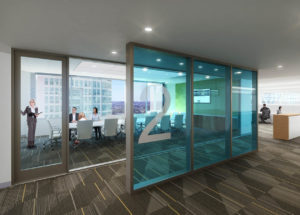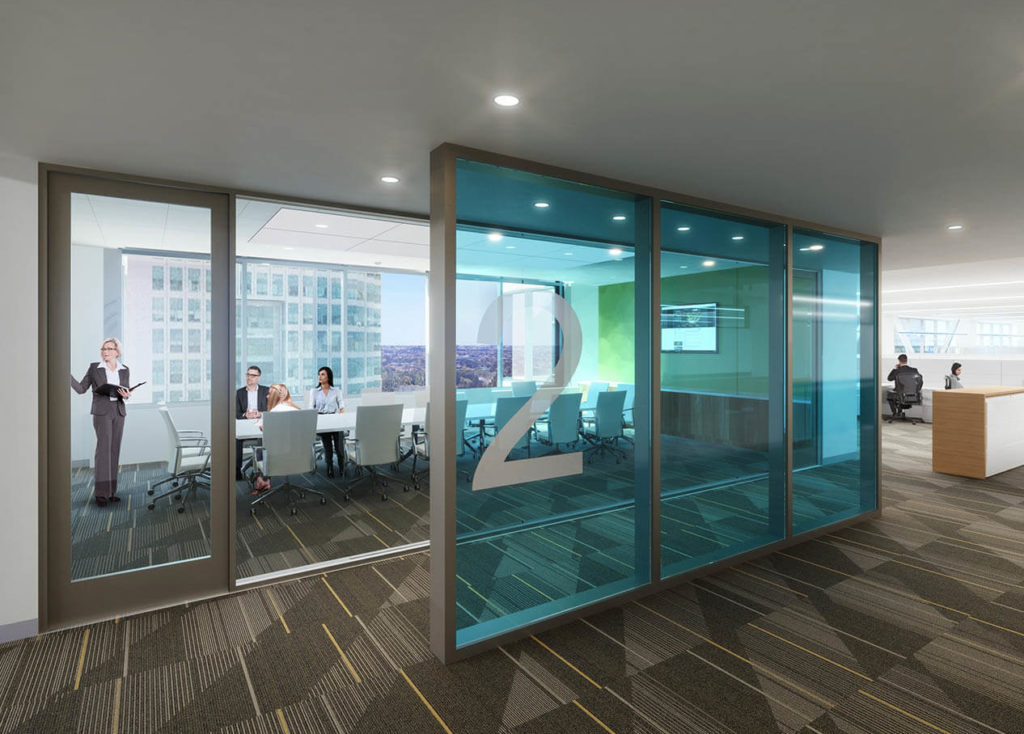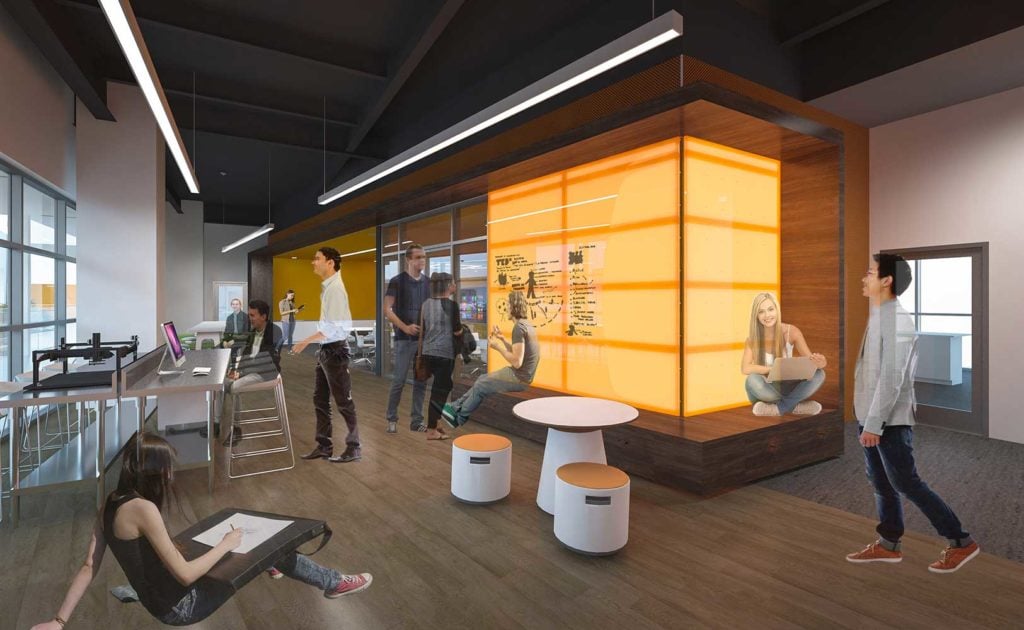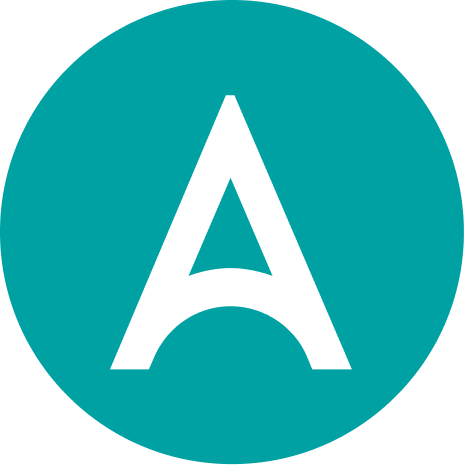

AECO INDUSTRY NEEDED BETTER TOOLS FOR MANAGING REVIT CONTENT
Since LPA’s start over fifty years ago, buildings have become more complex, and projects generate far more design detail for Building Information Modeling (BIM). One project can involve as many as 100,000 digital files—50 times higher than a decade ago, and that amount of data grows exponentially every day. The increasing demands strained traditional content management to the breaking point, and LPA needed new methods to handle the problem.
The Integrated Design firm of architects, engineers, interior designers and landscape architects all work as one LPA team. Using an informed design process, they collaborate among their integrated design teams to find the best answers for clients, and that’s also how they approached their content challenges. Technology, Practice Management, Quality, Codes and Research groups all felt the need for a functional library and content management system (CMS), so they joined together to find one.

LOW PRODUCTIVITY: THE COLLATERAL DAMAGE OF LOST INFORMATION
It’s not difficult to imagine a designer spending 30 minutes a day searching for files. The multiplying effect of that wasted time across users and weeks quickly becomes significant, resulting in reduced productivity and design quality. Industry veteran and LPA Associate Principal, Charlie Williams, knows this challenge well. He leads projects and initiatives that facilitate integrated design in this complex digital world. By ensuring teams have the right tools, processes and education, he helps inspire the design process to deliver better buildings. As a member of the content management search team, Charlie and other members of the technology team at LPA, including Nick Kramer and Bill Debevec, brought an understanding of both the workflow process and architectural integrity.
Long-standing Priority: An Integrated Design Approach
As a design firm, LPA takes an integrated and informed approach for seamless development processes, higher-quality outcomes and better client-focused solutions. Everyone on the LPA team gets involved from start to finish, and common access to content was critical to that model.
The firm’s definition of success with a content management system paralleled their vision of informed design through integrated design teams. The solution needed to eliminate redundancies and streamline work by meeting these criteria:
- Standardized library to ensure content consistency.
- Improved review process to maintain current, approved content.
- Shared guidelines for creating models to avoid rework and errors.
- Security to protect intellectual property and confidential data.
LPA went through several phases on their CMS journey, trying both proprietary and commercial solutions. As part of an in-house effort, they created their own details database with search, imagery, photo information, drawings, PDF files and other components.
However, as usage grew, the volume overburdened the system, and “it fell apart,” says Charlie. After several tries with both commercial and internal efforts, LPA decided “we didn’t want to be software developers. We needed to look outside for scalability and stability.”


Criteria for BIM Content Management
To select the right solution for content management, search and workflow support, LPA created a scoring system based on the five criteria below. The AVAIL platform scored 4.5 out of 5 in every category:
- Intuitive Interface: with a few clicks, tags and filters narrow searches to a small subset of content to visually identify what’s needed.
- Workflow Support: breaks down silos by making current content accessible across groups.
- Cultural Match: interface is designed by designers with AEC backgrounds.
- Simplicity: eliminates the hierarchical folder system, so users can search and use any file type, regardless of location.
- Analytics: improves processes by seeing what is being searched, found and also not found.
Search, Indexing and User Experience
LPA finds the AVAIL user interface offers simple navigation that focuses on the designer experience. The organization and search capabilities are easily customized, and LPA doesn’t have to support and maintain any platform. This supported the need for a solution with simplicity, cultural match and an intuitive interface.
According to Charlie, AVAIL’s “Search is flexible, but robust. It’s known that these systems pay for themselves, and you can tell at a glance what it will do for the firm.” Time savings come from better ways to manage content and find information. Other outcomes are quality designs and improved aesthetics. He says, “It gives us more time to think about design.”
With 400 people at LPA in content-related roles, it’s important that all have access to the same information. “But the reality is people work quickly and in silos. We can’t reinvent the wheel every time,” explains Charlie. AVAIL takes application silos out of the equation by indexing and organizing any file type. And its future-proof, open-ended architecture is designed to grow and change with the firm by working with any current or future application.
With AVAIL, Content Stays Local for Users
Accessing content where it resides is great for consistency. Charlie appreciates that content stays “in its original place,” with users pushed to the current version. There’s no need to move data, and content can be in use in more than one place at a time. Files are indexed locally with metadata stored in the cloud, allowing content to stay in its original location. Channels serve as virtual organizers, with digital assets grouped according to departments, projects or libraries.
Breaking Old BIM Content Habits
AVAIL drives productivity and quality improvements well beyond the design stage. “One problem was both individuals and entire teams would go back to old projects and carry forward old mistakes to new designs,” explains Charlie. There wasn’t a go-to place for standardized details, and that created a constant risk of introducing old errors into new work that could cause problems later.
Detecting an error costs many times more in the construction phase than in the design phase, so it was critical and prudent to minimize mistakes during design. By making the right content available, previous mistakes stay in the past, and downstream project steps have better outcomes.
AEC Content Management for Scalability, Flexibility, Blocks and CAD Details
AVAIL addressed many of the problems LPA needed to solve and then some. LPA now has a scalable tool to organize and search that works well with Revit, blocks, templates, CAD details and analytics. Other strengths they found in the platform include:
- Photo management
- Support for disciplines and workflow
- Drag and drop simplicity
- Full detail sheets
The choice of AVAIL brought LPA to the solution they’d been seeking for several years. Charlie had been interested in the platform since hearing AVAIL CEO Randall Stevens on a podcast. After being introduced to AVAIL by Bill Debevc on the BIMTHoughts podcast, and Nick Kramer at the BiLT conference he stated, “I was hands-down sold and anxious to implement it at LPA!”
Now the extensible, open-ended architecture is solidly in place, ready for current and future applications. Charlie expects that “after a complete (AVAIL) rollout, firm-wide, it would be used on all of our projects.”





